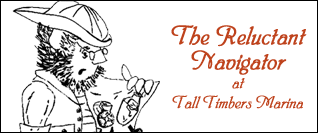Environmental Commentary by Kate Livie
Alosa sapidissima––the American Shad. In Latin, its name translates to “most savory herring,” yet the shad’s exquisite flavor so craved by Chesapeake people for thousands of years is unknown to most folks in today’s watershed. For millennia, as March howled away leaving April in its wake, our ancestors hungrily anticipated the signs that would indicate the spring shad spawn had arrived, with its rich filets and roe, meaty and restorative. Access to the seething hordes of shad, a water-borne salvation after the starving winter months, was so hotly contested that early denizens of the estuary burned, plundered and murdered over the fishing rights.
That annual ritual of springtime feasting was stopped by the widespread proliferation of dams, first for milling, then for electricity, that barred upriver passage for millions of north-bound shad. Today, there is no shad harvest of any consequence in the Chesapeake. Our scrambled eggs in Maryland and Virginia are unadorned by the shad’s savory roe, herald of springtime in the Bay.
Meanwhile, our estuary lost a vital life force that once pulsed through its tributaries signaling rebirth, renewal and survival. We, the inhabitants of the Chesapeake watershed both bipedal and finned, are dammed.
Shad are anadromous fish that spend most of their lives in the ocean, returning by the millions to spawn in freshwater tributaries once the water temperature warms. This springtime inundation historically defined the bitter edge of winter in the Chesapeake. Indians developed techniques to harness this raging abundance, constructing nets and weirs to corral the frenzied, thrashing shad. After settlement, shad were so ubiquitous in colonial communities that they were distributed to paupers (gaining them the nickname “the poor man’s salmon”).
Shad was also the first fish exported from the Chesapeake in large numbers. Pickled in salt and packed in barrels, shad could be found from the mid-1700s in major city markets like Philadelphia and New York. An early spring shad run has even been attributed to the survival of American troops at Valley Forge during the late winter. That tale (though probably apocryphal), along with the creation of large-scale shad fisheries at the Virginia estates of Washington and other prominent statesmen, cemented shad’s status as the “first fish.” One hundred years before crabs, oysters, or rockfish were established as large-scale fisheries, shad were the most important seasonal harvest in the Chesapeake.
Today, the traditional shad fishery has been shut down, leaving only the scanty few caught as commercially regulated bycatch, or through recreational catch-and-release. Prevented from continuing their migration by ever-multiplying dams—the modern Susquehanna watershed alone has 19—the shad population’s precipitous decline began in the early 20th century. Overharvesting quickly followed, as commercial pressure to maintain the fishery took its toll on the dwindling shad schools. As a remedy, generations of human-raised shad were released, only to be obstructed by dams where few of the shad managed to navigate fish ladders or lifts. Within 100 years, the silvery shad that had flooded in numbers beyond catching—beyond counting,—were reduced to a thin trickle weeping through cracks in our barricaded Bay. In 1980, Maryland enacted a moratorium on the shad fishery. Virginia followed in 1993.
The solution to this tragic tale may be in our past. Beginning in the 18th century, Susquehanna access to shad created a series of conflicts so regular they were termed the “Shad Wars.” Documented in scores of legal cases over the next 100 years, river dwellers broke dams, raided, burned, and in some cases, murdered each other for fishing rights. Shad was seen as a birthright, and it represented the difference between poverty and solvency, starvation and plenty. Our Chesapeake forbearers, unlike us, were anything but complacent about their rights to a Bay, commonly owned, whose balance and productivity meant survival.
To restore the iconic Chesapeake shad, we must clamor unequivocally for an unobstructed estuary. While some small effort has been made to create fish ladders or passages, the results are sadly inadequate. Many existing dams are outmoded or abandoned and could be easily breached, allowing access. By advocating for an unimpeded Bay, we make a stand for the culture, the fishery, the economy and the natural equilibrium of a Chesapeake Bay—a place where shad have meant spring and renewal for millennia or more.
Kate Livie writes from Chestertown, Md. Distributed by Bay Journal News Service.


